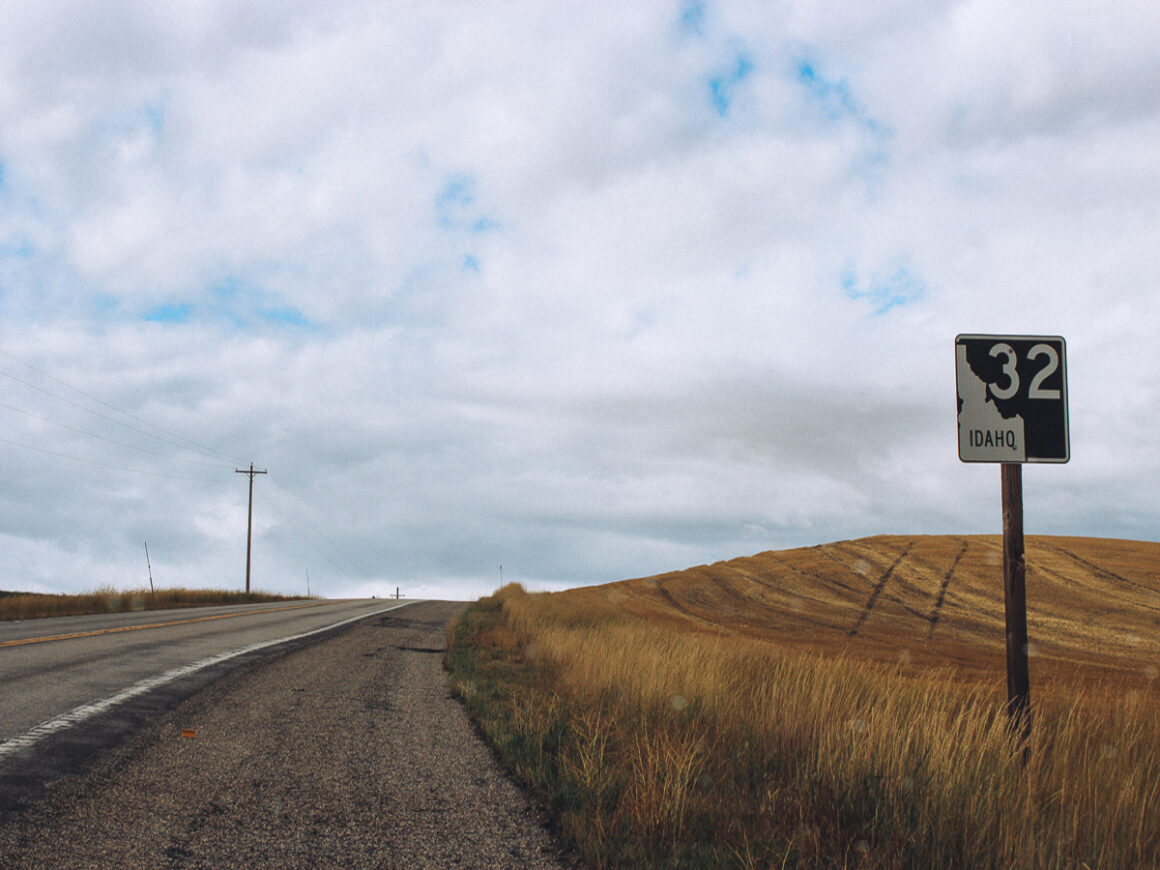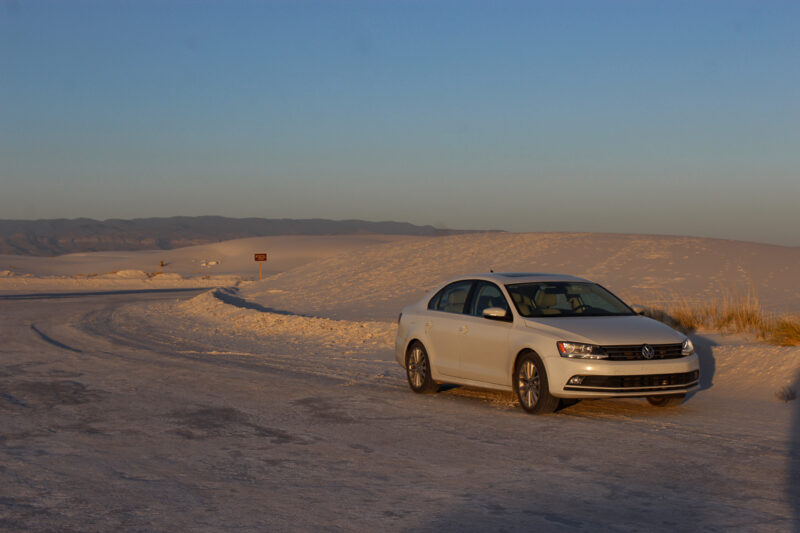How to Plan a Road Trip: the Best Step by Step Guide
It’s no secret that I’m obsessed with road trips. I’ve driven over 100k miles of solo road trips and even more miles with family and friends. In my opinion, road tripping is the best mode of travel. It allows you to explore on your own schedule and really get to know a destination.
But coordinating and learning how to plan a road trip, especially a cross-country road trip with various destinations and stops, can be challenging. To make it a bit easier, I have a method I use every time I’m planning a road trip. It works for beginners and road trip veterans. Let’s go!
This article contains affiliate links. That means I may receive a commission, at no extra cost to you, if you book or buy something from a link I provide. This keeps Southerner Says online and on the road. Thank you for your support.
How to Plan a Road Trip
The difference between a road trip and a successful road trip is good planning. It sounds like a lot of fun to just grab a bag and ride off into the sunset but in reality, it isn’t very practical. Especially when you have limited vacation time.
If you aren’t prepared, you can waste time, drive around needlessly and miss special things. So, before you start planning a road trip, there are a couple of things to ask yourself: 1. do you actually have enough time to get to where you want to go and 2. how much can you comfortable drive in a day?
These two questions will have a big impact on how successful your road trip is. Here’s why.
Step 1 – How Much Time Do You Have for a Road Trip?
Prior to deciding where you’re going on your road trip, it’s important to consider if you actually have enough time to get there. Remember, road trips should be fun. This is your vacation after all. You don’t want to feel pressured to get somewhere.
Plus, more than just a way to get from point a to b, one of the best things about road trips are all the fun stuff and surprises you discover along the way. A good road trip plan should allow time for some of those unexpected things your run across.
If you feel stressed and are running around just to get to your destination because you’re short on time, it’s not fun anymore. So, when you start planning a road trip, be realistic about how much you can actually do. Don’t over plan. And make sure you have time for driving to your destination and enough time for both planned and unplanned activities.
Step 2 – How Many Miles Can You Comfortably Drive?
The next step for planning a road trip is figuring out how much you are comfortable driving. It might not sound like it’s a big deal but if you are someone that doesn’t drive much in your day to day life, then a long or a cross-country road trip might be a bit overwhelming.
To prepare, it’s best to do some practice runs. Try a long weekend road trip and gauge how long and how many miles you’re comfortable driving in a day. Experts recommend driving no more than eight hours a day and stopping every two to three hours to stretch your legs and take a break. This break up the monotony and revitalizes you physically and mentally.
Of course, some people might not want to stop that often and others may want to stop more. What’s important is what works for you. It might take a couple of road trips to find your sweet spot but you’ll get there.
Once you decide to bite the bullet and take a longer or cross-country road trip, then you can always take someone along to help with the driving. Two drivers – or even three – are best. That way you can split up the driving and no one person is exhausted because they’re the only driver.

Step 3 – Choosing a Road Trip Destination
Now that you have an idea about the timeframe and how much you are comfortable driving – it’s time to pick your destinations.
Most people probably already have an idea of where they want to go when they start planning a road trip. Some people, like me, keep lists of places they want to see – a bucket list or wish list. If you already have something in mind, again, just make sure it fits into your time.
However, if you are still unsure of where you want to go and need some inspiration, it’s time to pull out the map or look at your favorite social media or blog of choice for ideas.
And if you still need help, think about your interests and hobbies. Do you enjoy nature? Then plan a national park or state park road trip. You can even focus on a specific region like Utah with a Mighty 5 national park road trip that includes Zion National Park, Bryce Canyon National Park, Capital Reef National Park, Canyonlands National Park and Arches National Park.
Do you like quirky stops and art? Maybe a Route 66 road trip is a good option for you. Literally, anything can be turned into a road trip. I know people who visit ball parks, lighthouses, wineries – with a designated driver of course – on road trips. The possibilities are virtually endless.
Step 4 – Planning a Road Trip Route
Since you’ve got your destination nailed down, what route will you take to get there? Will you stick to the freeways? Take the back roads? Or maybe a little of both? An easy way how to plan a road trip itinerary is using Google Maps. Simply enter your destination, or multiple destinations, from your starting point and browse the routes Google suggests.
If available, Google Maps will generally provide several options to choose from. From there, you can filter the results to your liking, avoiding highways and toll roads. One of the super useful features in Google Maps is the ability to add layers to your map. This is especially convenient because you can save route directions in one layer and add attractions and whatnot in another layer.
Google allows you to add up to ten layers in a single map so you could potentially add your entire itinerary and to-do list in the same saved map. These helpful features are easiest to create from your Google account and My Maps on your desktop computer.
Another helpful tip on how to plan a road trip is to look at the actual miles between destinations and the route’s type of road. A destination might look close and doable on the map but the route could be a small two lane road that requires more time and patience.
Keep in mind that in many states, rural roads and some times even interstate routes have a lot of wildlife. That can slow you down substantially if you plan on evening or night driving. Take this into consideration when choosing your route and how much you plan on driving.
Google Maps isn’t the only app that can help you plan a road trip. A few other practical road trip apps I like are:

Step 5 – Where to Sleep on Your Road Trip
The most difficult part of how to plan a road trip is figuring out where to stop for the night and sleep. It’s generally not a problem if you are road tripping to only one location and know exactly where you’re going. But if you have an open ended itinerary without exact stops, then it’s more challenging to plan.
Even when you are road tripping and book accommodations in advance, there’s that pressure to get there. What happens if, along the way, you find something you want to do or a place you want to spend a little extra time?
To avoid that scenario, you might be tempted to not make any reservations and just wing it. Unfortunately, this also can be risky. Hotels and even campgrounds in popular locations, or at busy times of the year, fill up quickly. You might end up having to sleep in the car. Ask me how I know about that.
One thing I’ve found helpful is breaking the road trip up into small segments within the bigger road trip plan. For example, let’s say I’m driving to California from Georgia and I’m planning on stopping at Grand Canyon National Park four days from now. I know that park is a popular, busy national park so I’ll go ahead and book my room or campsite in that area.
That way, I feel secure knowing that I at least have set plans and a place to sleep for the most crowded stop of the road trip. With that done, I can anticipate where I might be before I get to the Grand Canyon and either book more accommodations or wing it.
The more you road trip, the more skilled you will become at figuring out the sleeping part. Really, if you are just going from point a to point b and know exactly where you’re going and where you’re stopping, then the lodging part shouldn’t be a problem. Booking.com and Expedia.com are my go-to’s for hotels. KOA’s and Hipcamp are good for camping.
Southerner Says: if you are on a long haul road trip and plan on camping, you might want to plan a hotel stay or Aa home stay every few days so that you will have laundry access and a real bed.
Step 6 – Planning Road Trip Stops
Besides the necessary stops like fuel stops and bathroom breaks, you want to plan some fun stops for your road trip too. There are some helpful websites to help with interesting stops.
RoadsideAmerica offers a convenient mobile app for finding fun stops along the way. Atlas Obscura is another good website and app for finding unusual attractions along the way. Additionally, Recreation.gov has an interactive map of national park sites across the country and allows you to build a trip to national parks and other public lands.
As you find things that interest you, make a list. When planning a road trip, I usually have two lists. One is for the things I absolutely want to do. Then, I also have a “b” list. This is a list of things I’d like to do, if I have time. You can also use Viator.com to check for ideas and tours in the area.
Besides planned stops, some of my best road trip memories have been places I just happened to discover along the way. Yet another reason to have plenty of time. If you see something that interests and you don’t stop, I promise, those places will haunt you forever. I’m still trying to find a gas station I missed on Route 66 way back in 2014.

Step 7 – Choosing the Best Vehicle For Your Road Trip
One of the last things to consider in how to plan a road trip is the vehicle you plan to drive. That might sound odd since you probably already own a vehicle and are thinking you’ll drive it. But If you are planning a cross country or a high mileage trip, you might want to consider if your vehicle is the best option for the kind of road trip you’re planning.
With higher gas prices, if your vehicle is a larger SUV that consumes a lot of fuel, it’s possible that renting a smaller more economical car could be more practical and money saving in the long run. Planning on a cold weather destination or somewhere that has a lot of unpaved roads like Death Valley National Park? Then an all wheel drive or a four wheel drive might be the best bet.
Other factors that might affect what vehicle you take on your road trip is: how many people are going? Do you have room for everyone and their luggage? How much equipment do you need? Based on your answers, in some cases, a rental might be the better option.
If you do decide to drive your own vehicle on your road trip, it’s a good idea to have an inspection by a professional before you hit the road. Or at the very least, check a few other key things like the tires, fluid levels and the battery before you head out.
It’s also good practice to have an emergency kit with water, food and anything else you might need. Plus, a good multitool, a tire gauge and a jumpbox that starts the car and airs up the tires just in case. I also highly recommend investing in a roadside assistance plan like AAA.
Step 8 – Putting Your Road Trip Together
Once you’ve gotten this far with your road trip plans, I recommend using either a digital calendar or a spreadsheet for all your plans. That way you can put it all together and look it over. Personally, I like to print a calendar and write on it. Either way, it’s entirely up to you.
A calendar is useful because it can help with daily plans. It’s simple to divide up the morning and afternoon. If there is a firm final destination, I’ll put that on the calendar and work backwards.
Doing that, I can estimate how many miles I need to drive in a day, I can also figure out about where I should be on certain dates. Then I can fill in around those dates with activities and things I want to see in the area.
Once everything is on the calendar, look at it closely. If you think you’ve got too much planned, then you probably do. Move some things to your “b” list, remembering you can always add it back if you have time.

Step 9 – Music + Podcasts on a Road Trip
Whew! You’re almost done planning your road trip. The last piece of how to plan a road trip is not really necessary but can make the road trip much more fun. I’m talking about road trip music. You simply cannot road trip without a great playlist!
Music has a way of making a long boring stretch of road so much more enjoyable. I even made a playlist to get me in the mood for a road trip. If you subscribe to a music provider like Spotify, you can follow my playlist and many others on there or plan your own road trip soundtrack.
Most recently, I’ve started listening to more podcasts too. Some of my favorites are Office Ladies, Smartless and 90 Miles From Needles.
Final Thoughts on How to Plan a Road Trip
Even though you might already have your own way of planning a road trip, hopefully you’ll be able to incorporate some of these tips to better your itinerary. Honestly, you can never be too prepared.
The freedom to do whatever you want, see whatever you want to and spend some time with a favorite person, your family or even solo on a road trip, is priceless and worth all the planning. Are you ready to go?
See you on the road!










You made a good point when you mentioned that a good plan would allow for some unexpected things on your road trip. Would it be a good idea to know where gas stations are going to be located on your route? Knowing where gas stations are would be a good way to handle unwanted situations on your trip.
Hi Henry! I agree that it’s important to have an idea of where the gas stations are especially in a desolate place like Death Valley. Even if you fill the tank before you go into the park, with so much driving, you know you will have to fill up again. Thanks for the suggestion. Happy trails!